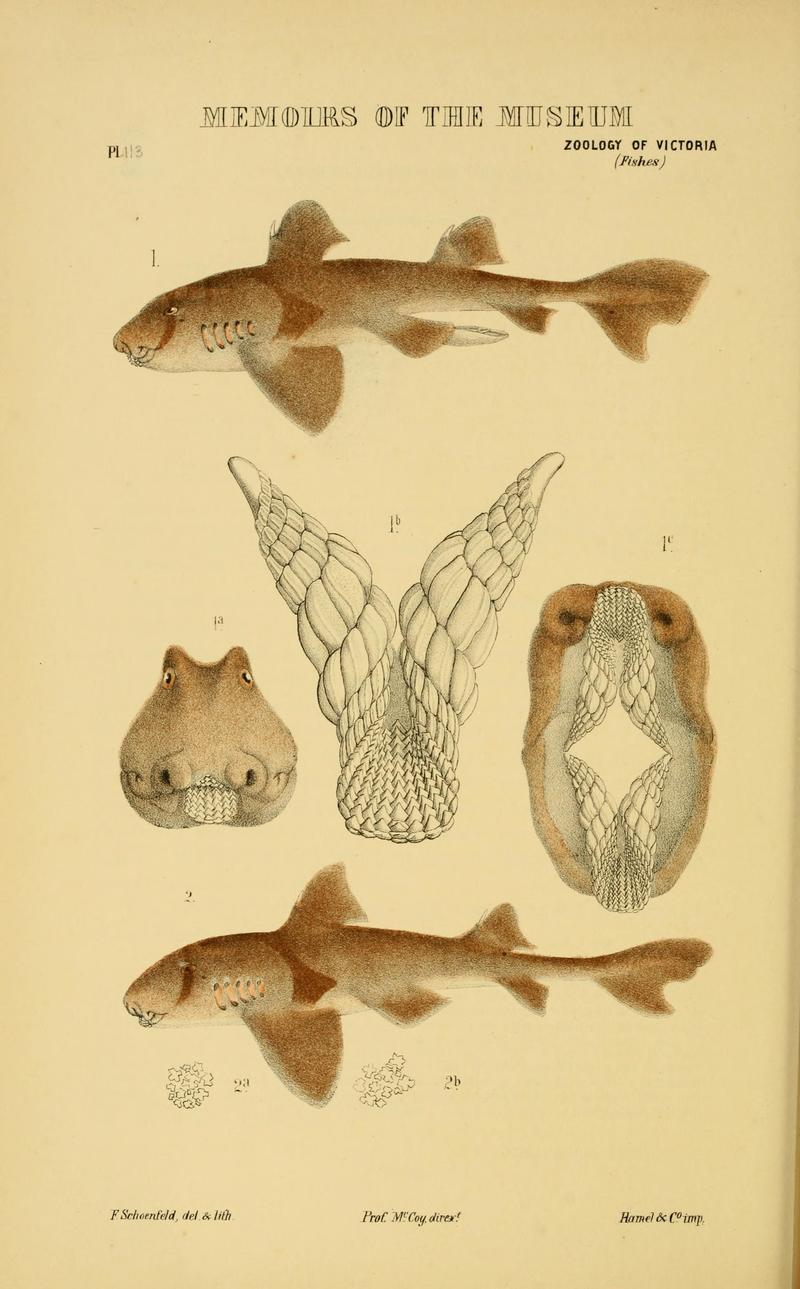|
| 질의: Sea urchin | 결과: 167번째/176 | |
Heterodontus philippi = Heterodontus portusjacksoni (Port Jackson shark)
| 제목: | Heterodontus philippi = Heterodontus portusjacksoni (Port Jackson shark)
| | 올린이: | Wiki Photos (---@---.---)
| |

| 해상도: 2455x3957
파일크기: 647266 Bytes
등록시간: 2024:02:13 15:00:46
|
PLATE 113.
HETERODONTUS PHILLIPI (LACÉP. SP.).
PORT JACKSON SHARK, OR BULL-DOG SHARK.
Heterodontus portusjacksoni syn. Heterodontus philippi
EXPLANATION OF FIGURES.
PLATE 113. Fig. 1, side view, male, reduced. Fig. 1a, anterior view of head, mouth closed, showing the form of the lobes of the lips in front, and exposure of teeth above and below. Fig. 1b, teeth of lower jaws, natural size. Fig. 1c, mouth widely opened, to show similarity of dentition above and below. Fig. 2, female, reduced. Figs. 2a and 2b, irregularly stellated shagreen of head and body, magnified.
FREDERICK McCOY.
Plate 113. Heterodontus philippi (=Heterodontus portusjacksoni)
Date 1890
Author Frederick McCoy
Full title Natural history of Victoria. Prodromus of the zoology of Victoria; or, Figures and descriptions of the living species of all classes of the Victorian indigenous animals... By Frederick McCoy...
BHL Page URL https://www.biodiversitylibrary.org/page/3828480
Source: https://commons.wikimedia.org/wiki/File:Natural_history_of_Victoria_%286008514636%29.jpg
Heterodontus portusjacksoni - Port Jackson shark
The Port Jackson shark (Heterodontus portusjacksoni) is a type of bullhead shark of the family Heterodontidae that lives in southern Australia. It has a large head with ridges above the eyes and a pattern of dark markings on its body. It lays eggs in shallow water and feeds on sea urchins, mollusks, and fish. It can grow up to 1.65 meters long. It is named after Port Jackson, the natural harbor of Sydney, where it is commonly found. It has two spines in front of its dorsal fins that can be used for defense or to anchor itself in crevices.
Order: Heterodontiformes
Family: Heterodontidae
Genus: Heterodontus
Species: Heterodontus portusjacksoni (F. A. A. Meyer, 1793) |
^o^
동물그림창고 똑똑전화 누리집
^o^
|
|